(This is the first of three daytrips in the San Francisco in 3 Days series.)
This first day in San Francisco is an introduction to the Bay Area. We also manage to cross many tourist attractions off the list…in perhaps an unconventional way that is palatable (and less stressful) for bay area residents. We start off driving down the Pacific Coast Highway so that we don’t bury the lede on the geographical wonder that is the bay area. We visit (and eat our way through) a small, coastal village before going straight into the belly of the beast: Union Square, Chinatown, and North Beach. Hopefully, your visitor has the stamina to take all of this in, and have their appetite whetted for what’s to come in days 2 and 3.
Day 1: Pescadero and downtown San Francisco:
What you’ll need to bring:
- A car
- Comfortable walking shoes
- Windbreaker/light jacket
- Picnic blanket
- 3 or 4 butter knives
- Napkins
Recommended Itinerary (10 hours, drive 92 miles, walk 1.8 miles):
- Drive down Pacific Coast Highway to Pescadero
- Shop in Pescadero’s Arcangeli Grocery for picnic supplies
- Have a picnic on the beach.
- Head back to your apartment or hotel to rest
- Take BART to Montgomery Station in downtown San Francisco
- Walk through Union Square
- Have a glass of wine at Top of the Mark during sunset
- Walk through Chinatown and North Beach
- Dinner at Globe in the financial district
1. Drive down Pacific Coast Highway to Pescadero
Our three day tour begins with the majestic and oft-auto-commercial-featured Pacific Coast Highway. This is perhaps an odd choice to immediately whisk a visitor away from the metropolis they intended to visit, and throw them on a rural road headed to a no stop light town. However, the drive places San Francisco in its proper historical, geographical, and culinary context that will serve visitors well in the days to come.
The drive begins on Interstate 280 (funny side note about Californians: they put “the” in front of interstates. As in: “So, I was driving down the 95 and swerved to miss a gaggle of motorcycling youths.” I’m not sure why they, as a state, have decided that this is ok, when it clearly sounds so funny.) Within minutes of starting this drive, you will be able to see the Pacific Ocean looming in front of you. This is one of the wonders of San Francisco – just how close we are to breathtaking natural beauty. You’ll fly right past the city’s Twin Peaks and over the Outer Sunset District. Outer Sunset comes into full bloom from this vantage point, with all of its colorful houses aligned in perfect rows straddling undulating waves of hillsides.
Twin Peaks is actually a meteorological force in San Francisco, contributing to its micro-climates. Although the city is known for its foggy days and nights and summers (and and and), the weather actually fluctuates neighborhood by neighborhood: micro climates. Twin Peaks, two 922 ft hills in the middle of the city, divide the eastern neighborhoods from the western neighborhoods. The ocean air hits their western edge and frequently does not make it over the hills. This means that the eastern portions of the city (Noe Valley, Mission, Potrero Hill) remain sunny and warm while their sister western portions (Sunset, Richmond) are grey and cold. Neighborhoods north of the hills (Laurel Heights, Pacific Heights, Nob Hill, Downtown) do not benefit at all from the hills, and the wind marches right on through.
You’ll have to veer off Route 280 to continue driving on Route 1 South.
Route 1, or Pacific Coast Highway, soon straightens out into a two lane highway. It is surprising how quickly civilization drops by the wayside along this drive. Before you know it, you will be maneuvering between rocky crags and steep drop offs into the ocean. As a driver, you might find yourself clutching the wheel tightly while a sweat forms on your brow, but your passengers will be unable to avoid squealing at the beauty of it all. It is best not to look and find out what all the fuss is about.
Our east coast visitor’s first exclamation had to do with just how blue the ocean is, more reminiscent of the color of the Caribbean or Mediterranean than the Atlantic (oh, the poor, utilitarian Atlantic!). It fluctuates between a light turquoise blue and a cobalt blue, due to the deep trench that lies off the northern California coast. The trench also explains why the water is so chilly here, as well as the presence of sharks.
The rocky crags themselves soon give way to flat uninhabited sunny grassland, with the hills more than a mile or two inland. The drive to Pescadero is marked with a lot of nothingness – grass, two lane highway, ocean. I’m not sure if I’ve been uncannily lucky in the traffic department, but I have yet to drive along this stretch of Route 1 with another vehicle anywhere nearby, including on Memorial Day Weekend. Why is this? Where is everybody? Do y’all know what happens to Route 27 in Long Island on the weekends, let alone on Memorial Day Weekend? I think they give you a trophy if you actually make it to Montauk by Sunday. I understand there are biggerfasterbetter highways that lead to Santa Cruz and the southern reaches, but I’m surprised others don’t also prefer the ambulatory route along the ocean. Going to the beach shouldn’t be rushed or stressful.
Roughly 15 miles south of Half Moon Bay, you will see a large wooden sign pointing to the turn off for Pescadero. I know you will question why anyone would turn left here, as all that is visible are green rolling hills and more grass. Trust me on this one, you will want to make that turn.
2. Shop in Pescadero’s Arcangeli Grocery for picnic supplies
As you fishtail your way through the green hills, you’ll think that you made a wrong turn. Pescadero is 2 miles inland, and completely hidden in its valley. There is only one way to roll into town, and that is to take a left when you see “downtown.”
Wikipedia promises that 2,042 people live in Pescadero, and you will wonder where the other 2,032 people are hiding. The 5 or 6 buildings that compose downtown were built in the 1860’s and they look the part. It is almost as if a ghost town had managed to survive.
Park your car and head towards Arcangeli’s Grocery. It is the last commercial building on your left. The market offers a great assortment of homemade jams (at least 20 varieties) and cheese from northern California towns. The reason for stopping at this market, however, is their Artichoke Garlic Bread. It was delivered fresh from the ovens as we were shopping, and we quickly pounced on the warm, aromatic bread. Also make sure to purchase some beverages and fruit to round out your picnic.
If your group isn’t interested in having a picnic on the beach, head to Duarte’s Tavern across the street and have a bowl of their Cream of Artichoke soup. The tavern and its staff are warm and welcoming, and the food is all locally sourced, hearty, and good.
Pescadero manages to exemplify what is great and unique about this region of the country. The food is just so good, and it’s all from around here. I’m not sure if this is because all produce comes from California, and so we eat it when it is ripest or freshest. I’m not sure if regional palettes demand good food, and the restaurants and markets have to deliver. I have been to many many small towns across the country, and I have never seen this level of consistently gourmet small town restaurants and markets. Ok, maybe Lancaster, PA can compete, but that is only one small city in a rather large state. Perhaps someone out there knows what’s going on here?
Head back to your car, and exit downtown the same way you came in.
3. Have a picnic on the beach.
Hopefully on the drive down, you spotted some potential beaches for your picnic. The beaches along this drive are mostly state-owned, and therefore open to the public. Some do charge parking lot fees, so make sure to have some cash on hand.
Pescadero State Beach is right across from the access road to Pescadero, and this will likely be your best bet. As this beach was fogged in during our trip, we attempted to return to the bluer skies we had seen up north (a rare occurrence indeed, as the south usually has clearer skies.) We stopped at Moss Beach, just north of Half Moon Bay. We managed to have our picnic before the fog overwhelmed this beach too.
Time permitting, it is a better idea to continue driving south in search of good weather.
4. Head back to your apartment or hotel to rest.
By this point, you may be feeling a bit sun struck — the sun does actually shine brighter in California. Drive back up the coastal highway and head back to your home or hotel for a bit of shade and relaxation. This is a critical step in your day, and I do not advise skipping it in the name of efficiency. Your visitors will enjoy themselves more if they are able to keep their eyes open and their legs strong.
At this point, your passenger side visitor will be staring inland rather than at the sea. Invariably, he will make a comment, such as: “So, why aren’t there houses here?” or “What are they farming here?” or “Is this a state park?” Well, they aren’t farming anything here, and it is not a state park. It’s just land, privately owned, and unused. This boggles the minds of our midwest and east coast industrialists. How can land, sit, unused? It’s downright blasphemous. Much of this has to do with land deeds issued nearly two centuries ago, when California was under Mexican rule.
Spain and Mexico began exploring California in the 1500’s. By the 1700’s, many of California’s cities were already established (including San Jose and Monterey). After Mexican independence in the early 1800’s, Mexico declared California a Mexican Territory. This is where things get a bit confusing. The Mexican government began deeding major swaths of land to Mexican ranchers in the 1840’s, right before the Mexican-American War. It may have done this because it didn’t have the resources to manage the faraway land itself. Kevin Starr, in his awesome California, seems to suggest that this was intentional, as the Mexican government foresaw that the United States would take California for itself. Regardless, when the United States signed the Treaty of Guadalupe Hidalgo to end the Mexican-American War in 1848, it promised to uphold all land grants then existing without fully understanding how much land had been granted. And, there you have it. A lot of the land grants go unused — the entire region surrounding Pescadero is part of the 3,200 acre Rancho Pescadero, abutting land grants to the north and south. This all horrifies economists, but it sure does make for a pleasant ride.
5. Take BART/MUNI to Montgomery Station in downtown San Francisco
I recommend arriving to the BART Montgomery Station around 4pm, so that you will have enough time to wander through the Union Square shopping district and make it to Top of the Mark by sunset.
The BART and MUNI Metro are the fastest way to get to downtown San Francisco, and if you happen to live near a stop, it will be a quick and painless way to introduce your visitor to San Francisco transit. (They may have thought that you hang off the back of a trolley for your commute, and it is a shame to disabuse them of the notion. But, forge honest pathways we must.) Transit is a key component of San Francisco–the cable cars began operating on Clay Street, making their way up to Nob Hill, in 1873. Even back then, people had no interest in actually walking up these God forsaken hills. (By comparison, New York began operating horse-drawn streetcars in 1832 and upgraded to electric cars fifteen years after San Francisco, in 1888.)
(See: How to ride BART and How to ride the Muni Metro)
From the corner of Market Street and Montgomery Street, walk along Market Street, away from the Ferry Building. Turn right once you get to Kearny Street. You will quickly make a left onto Maiden Lane, which looks like a very fancy alleyway. Which is exactly what it is.
6. Walk through Union Square
Union Square is San Francisco’s shopping district – it is 5th Avenue, 34th Street, and Soho rolled into one. Given the state of the economy, your guest may prefer to window shop than actually shop, and it is always dreamier and less depressing to window shop at Hermes (on the corner here) and Chanel (further up) than Old Navy or Banana Republic, which exist on the other side of Union Square on Market Street.
Continue walking through Maiden Lane, and by all means, stop for a pastry and coffee at an outdoor café if you like. Union Square, the plaza, will be straight ahead, demarcated by its tall palm trees and nearly 100 ft tall statue. As you walk through the plaza, note that not only is Levi’s (on the north east corner) based out of San Francisco, but so is Williams Sonoma/Pottery Barn, Gap, and Restoration Hardware. (If your friend is a Williams Sonoma fan, you may wish to take her to the four story flagship store just north of Union Square. It is very pretty, and the store keepers must be used to the common folk drooling and petting their wares by now.)
If you happen to be walking through on a weekend, Union Square will be full of artists selling art, with bustling outdoor cafes flanking each side. It will be absolute mayhem. Breathe calmly and make it across, and then start walking up the hill on Powell St.
It may be wise to inform your guest now that this is the only hill they will have to walk up in the next two days, but that this is a reality of living in our beautiful city. The hills make us weep, but they afford such unbelievable views. Hopefully, during your walk, a few cable cars will come streaming past, with tourists casually hanging off the edge like it’s no thing, just another Tuesday. Your guest will be able to check another San Francisco tourist attraction off her list.
Take a right when you get to Pine Street, and don’t forget to take a look down the steep hill to see how far you’ve come. Walk across Pine and take a left at Mason St. The Mark Hopkins Hotel will be looming very far over you by this point, and your guest may have figured out exactly why you are dragging her up this hill. Once you get to the top of the hill, you may want to walk an extra block north so that your guest can get a peek of the bay far below. These are the kinds of things you just see as you go about your business in San Francisco, and I still haven’t figured out how not to gasp.
Now, head into the Hotel and go straight to the elevator bank ahead and slightly to the left. Press the elevator button marked with a “T.”
7. Have a glass of wine at Top of the Mark during sunset
You will have felt like you’ve managed incredible feats by this point in the day, and sitting down and having a glass of wine will sooth and comfort (and serve as a precursor to Day 3 in Napa Valley). And then there’s the view. And, if you’ve timed it right, and I hope you have if this is any sort of romantic conquest, the sun will be setting behind the Golden Gate Bridge. Ask to sit on the right side of the restaurant.
I have noticed that Top of the Mark is often described as “a great place to take your grandparents for brunch.” This is said in a belittling way, and it is truly unfortunate. The restaurant, sitting atop 18 floors on the tallest hill in the city, offers 360 degree views of the entire bay area. This will be an excellent way for your visitor to get a good idea of the layout of our city. Point out landmarks, explain which direction is east. Point out Berkeley and Oakland, or where his hotel or your home is. Explain where you will be taking her tomorrow and the next day. Your guest will likely marvel at the very foreign phenomenon of fog rolling in under the Golden Gate Bridge, from a vantage point that makes it look other worldy (I used to compare it to that scene in Ghostbusters 2 when Vigo gets Angry). Is there a better way to show what exactly happens to our city every night?
I’m not sure why any of this would be relegated to a formal brunch, or why hipsters wouldn’t appreciate it just as much as your grandparents do.
If you are in the mood for a snack, I would recommend sharing the mezze platter. It may be a simple, an easy, formula, but they fry the pita chips here. It is absolutely marvelous.
Once the sun has set behind the hills, or behind the fog, whichever comes first, it is time to head out to dinner.
8. Walk through Chinatown and North Beach
As you head out of the Mark, turn right onto California Street. You will now begin your descent back down the hill. Be careful, as the hill is quite steep here.
Turn left when you get to Stockton Street. You will suddenly find yourselves in Chinatown. Chinatown is oddly another check on the tourist attraction score sheet. As with North Beach later, I prefer to sample these neighborhoods at night as they are less chaotic and a bit more charming.
As you walk down Stockton Street, your guest may be floored at the sheer enormity of Chinatown. It is easy to see that it’s larger than New York’s Chinatown. Indeed, it’s the largest community of Chinese people outside of China in the entire world. I always thought that Chinatowns were organic – people of similar ethnicity wanting to live in close proximity to each other. This is not accurate at all. Actually, Chinatown is a remnant of San Francisco’s, and indeed our nation’s, troubling history with race.
Chinese immigrants started arriving into San Francisco in the 1850s and participated in the Gold Rush as well as the construction of the transcontinental railroad. The United States did not attempt to limit Chinese immigration until 1882, which was the first law of its kind. (To put this into context, Ellis Island in New York opened in 1892.)
Turn right when you get to Broadway. As you approach Columbus, you’ll see the neighborhood abruptly switch from Chinatown to North Beach, the city’s historic Italian neighborhood. Turn right onto Columbus.
North Beach is frequented by tourists during the day, on their long, slow march from the financial district to Fisherman’s Wharf. At night, it returns to its seedier upbringings – this stretch of Columbus was part of the Barbary Coast, the red light district from the 1840s to the 1900s. (Little known fact that makes a lot of sense about the Gold Rush: the city grew to 25,000 people, only 300 of whom were women. Appreciate that for a moment. Prostitution was rampant, as were laws making divorces very easy to obtain. A divorced woman meant that another man would have the chance to marry.)
So, it is best to view North Beach at night. At night, you don’t notice that it could use a good rainfall, and the old school girly bars – with retro neon signs – light up Columbus and Broadway in a fun way. This comes across as “sweet” as opposed to the unsubtle 9th Avenue in Manhattan. Hopefully, your traveling companions love kitsch.
On your left you will pass the City Lights Bookstore, which is another city landmark. In the 1950s, North Beach was also home to the writers and poets of the Beat Generation, including Allen Ginsburg and Jack Kerouac. The bookstore, which is also a printing press, published many of their books and poems.
Turn left when you get to Pacific Avenue. Globe will be three blocks away, on your left.
9. Dinner at Globe
You’ll now be walking in the deserted financial district. There is a special romanticism about walking around urban wastelands, like film directors who roam the alleys of Tribeca late at night in search of what New York is supposed to be. Old brick buildings and slimy alleyways. Random light bulbs, and if you’re lucky, cobblestones.
The bar next door to Globe, the Old Ship Saloon, looks tantalizing (history says that in the 1850s, when San Francisco hadn’t yet been constructed but men started pouring in from across the country in search of gold, east coast ships simply docked and became the restaurants and bars and hotels and urban infrastructure (can you even imagine! No wonder it was only 1% female!) Despite its oddly modern, brick interior, the Old Ship Saloon says that it is a remnant of those ships. So, take that with whatever grains of salt you’d like.)
Despite the barren landscape and barren midnight grey facade, as soon as you enter Globe, you are welcomed with jovial revelers all cast in a warm, cozy glow. Yes, they are still serving food, and will do so until 1am (12am on Sundays). This should give your group plenty of time to get there, without any sense of urgency.
The food is what I consider to be “San Franciscan.” They make macaroni and cheese, but it’s a gourmet macaroni and cheese. That kind of place. Our entrees of salted cod and sweet corn were perfectly balanced and played to the corn’s seasonal peak in flavor. (My husband had less luck with the pork loin, unfortunately.)
We sat at the bar, and found ourselves engrossed in loud, boisterous conversation with everyone, including the staff, before our entrees even arrived. This being San Francisco, no topic was taboo and no hard feelings were had. Everyone shared their life experiences openly, anonymously, with much sympathizing tears and laughter.
After dinner, I recommend taking a taxi back to your home or hotel. Cabs are easy to come by if you turn left and walk down Battery Street. Hopefully, your night will also be capped by a cab driver telling you about the Holy Virgin Revelation he saw as he rounded the top of California Street one dark, foggy night. Oh, lovely San Francisco, you’re just showing off now…






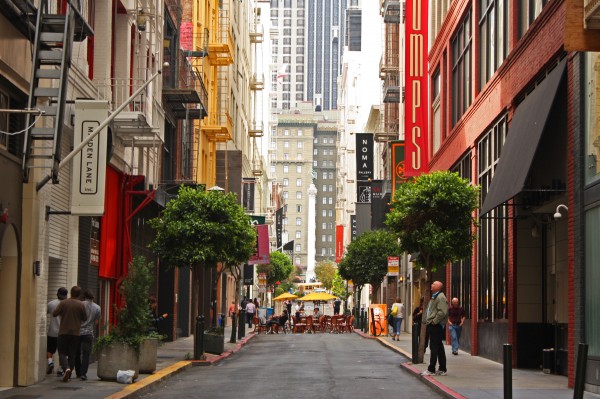
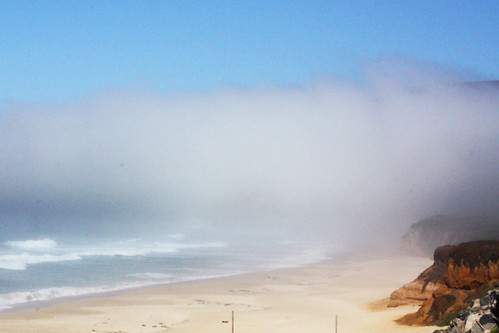
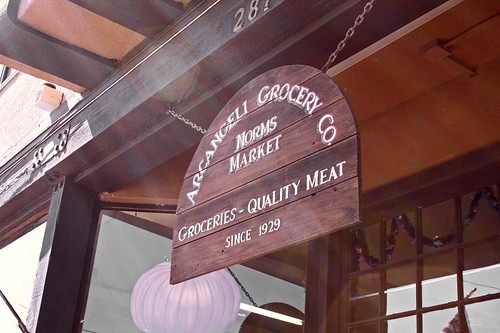
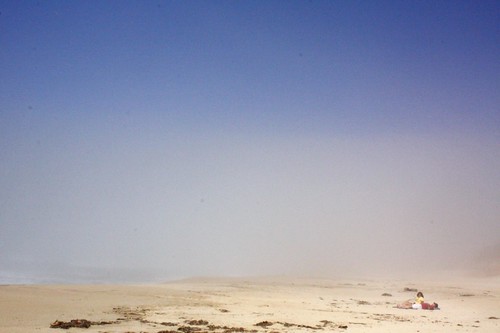

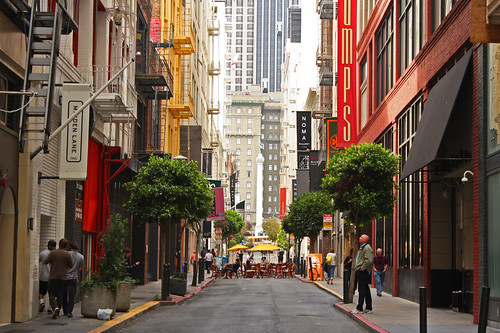
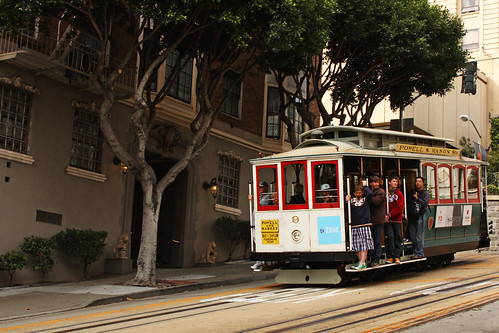
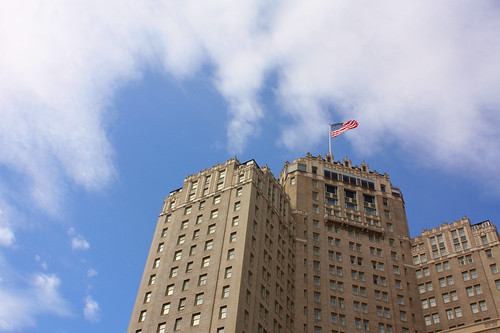
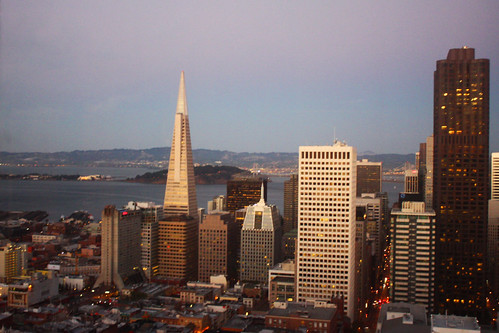

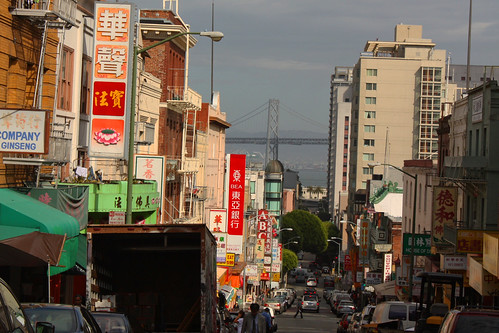
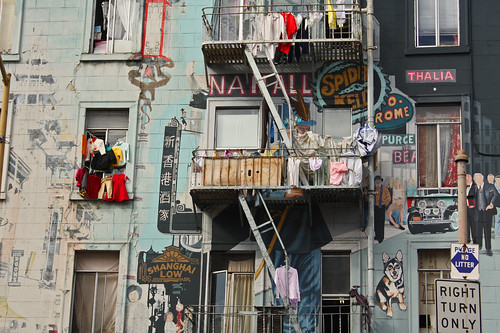
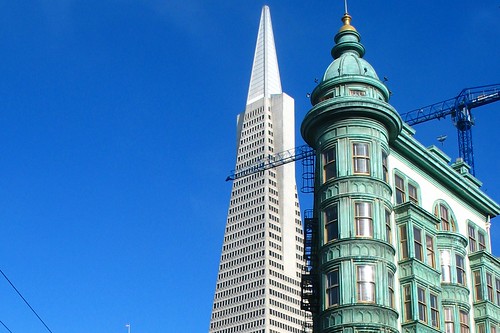
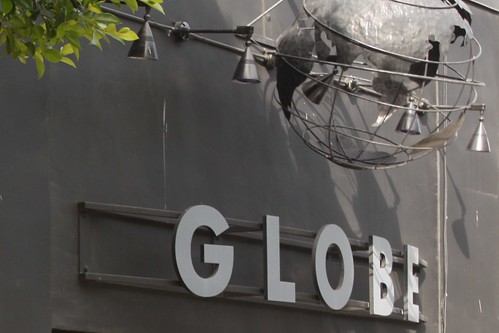

Far Out City » San Francisco in 3 Days
[…] Day 1: Pescadero and downtown San Francisco […]
10/6/2010 at 8:48 pm
Building Supplies
Stop at The Palace of Fine Arts and see it’s beautiful gardens and amazing architecture. Building Supplies
10/8/2010 at 6:42 pm
Far Out City » On the Road: Santa Cruz Boardwalk and Dinner in Pescadero
[…] If your group is game, stop at one (or all!) of the several farm stands along the way, and pick up healthy snacks for a picnic on the beach. If your group is decidedly a bit too gourmet for the Boardwalk’s corn dogs and funnel cake, it might be a good idea to roll into Pescadero for its excellent markets. […]
11/17/2010 at 5:00 pm